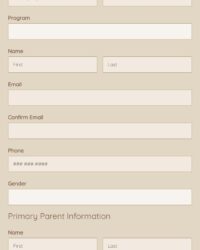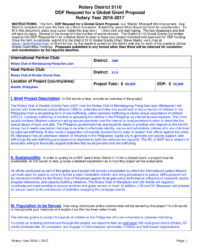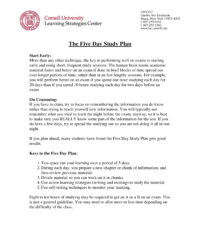Utilizing such a framework provides several key advantages. It reduces the likelihood of overlooking crucial details, ensuring a complete and competitive application. Furthermore, it saves time and effort by offering pre-defined sections and prompts, allowing applicants to focus on crafting compelling responses. Standardized formatting also benefits reviewing committees, facilitating efficient evaluation and comparison of applications. Ultimately, this structured approach enhances the chances of a successful application outcome.
This article will explore the key components typically found within these frameworks, offering guidance on how to effectively utilize them to maximize the potential for acceptance into a desired international program. Specific examples and best practices will be provided to assist individuals in navigating each section with confidence and clarity.
Key Components of a Study Abroad Application Framework
Successful applications to international programs often hinge on the completeness and clarity of information provided. A well-structured framework typically includes the following crucial components:
1. Personal Information: This section requires accurate and up-to-date personal details, including full legal name, contact information, citizenship, and passport details. Accurate information is essential for efficient communication and processing.
2. Academic Background: Previous education, including institutions attended, degrees earned, major field of study, GPA, and transcripts, forms the core of this section. A comprehensive academic history demonstrates preparedness for the intended program.
3. Program Selection: Clear indication of the specific program, institution, and desired start date is crucial. Applicants may also be required to provide reasons for choosing the particular program and institution.
4. Statement of Purpose: This crucial essay allows applicants to articulate their academic and personal motivations for studying abroad, connecting their aspirations with the chosen program’s objectives. A compelling statement can significantly influence selection committees.
5. Letters of Recommendation: Strong recommendations from academic or professional references who can attest to an applicant’s abilities and suitability for the program are typically required. These letters provide valuable external perspectives on an applicant’s potential.
6. Language Proficiency: Proof of language proficiency, often through standardized test scores (e.g., TOEFL, IELTS), may be required, particularly for programs conducted in a language other than the applicant’s native language.
7. Supporting Documentation: Additional documentation, such as a resume/CV, portfolio (for specific programs), or financial statements demonstrating ability to cover program costs, might be necessary depending on program requirements.
Careful attention to each of these components ensures a thorough and compelling application, maximizing the likelihood of acceptance into the desired international program. A comprehensive application reflects an applicant’s preparedness and commitment to the opportunity.
How to Create a Study Abroad Application Framework
Developing a robust application framework is essential for streamlining the application process for study abroad programs. A well-defined structure ensures all necessary information is gathered and presented effectively, increasing the efficiency of both applicant preparation and institutional review.
1: Define Essential Information Categories: Begin by identifying the core categories of information required for a comprehensive application. These typically include personal details, academic background, program choices, and supporting documentation. Clearly defining these categories establishes the framework’s foundation.
2: Structure Each Category: Within each category, determine the specific data points required. For example, the “Academic Background” category might require details on institutions attended, degrees earned, GPA, and major field of study. Structuring each category ensures a thorough and organized approach.
3: Develop Clear Prompts and Instructions: Craft clear and concise prompts or questions for each data point. Instructions should guide applicants on the type and format of information required, minimizing ambiguity and ensuring consistency in responses.
4: Design a User-Friendly Layout: Organize the framework in a logical and accessible format. A user-friendly layout, whether digital or physical, facilitates easy navigation and completion, reducing applicant burden and promoting accurate data entry.
5: Incorporate Relevant Policies and Guidelines: Integrate any relevant institutional or program-specific policies and guidelines within the framework. This ensures compliance and provides applicants with essential information regarding eligibility criteria and application procedures.
6: Test and Refine the Framework: Before widespread implementation, pilot test the framework with a small group to identify any areas for improvement. Feedback from testing can refine the structure, prompts, and layout for optimal clarity and effectiveness.
A well-designed framework simplifies the application process, ensuring completeness and clarity. This structured approach benefits both applicants and reviewing bodies, contributing to a more efficient and effective evaluation process. Regular review and refinement of the framework maintains its relevance and efficacy in supporting successful study abroad applications.
Careful development and utilization of structured frameworks for international education applications are crucial for streamlining the process and maximizing positive outcomes. Such frameworks provide clarity and organization, ensuring applicants submit complete and compelling materials while facilitating efficient review by admissions committees. Addressing key aspects such as personal background, academic history, program choices, and supporting documentation ensures a thorough representation of each candidate’s qualifications and aspirations.
Investing time and effort in understanding and effectively utilizing these frameworks represents a significant step towards achieving international educational goals. The structured approach fosters a more transparent and equitable application process, ultimately contributing to the growth and enrichment of global educational exchange. Successful navigation of this process opens doors to invaluable cross-cultural experiences, academic enrichment, and expanded personal and professional horizons.


